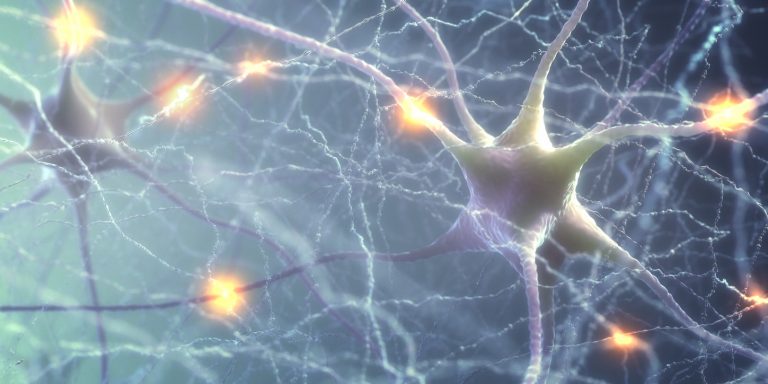Healthy Weight Loss with Intermittent Fasting
Human beings evolved the ability to store nutrients during times of abundance so that we could use them during times of famine. We now have a body adapted to scarcity and live in the modern world which consists of abundance and excess.
In modern Western society our tendency is to accumulate physical possessions and feed ourselves well beyond sustenance.
In light of this, a concept of scheduled scarcity has been growing in popularity. It comes to us in the form of intermittent fasting.
Intermittent fasting is a practice used to counteract the lifestyle changes humans haven’t had time to adapt to in the modern era. It’s used to support weight loss, improve cognitive performance, slow the onset of age-related debility and improve digestive issues. Read on to learn how you can introduce intermittent fasting into your routine.
What Is Intermittent Fasting?
Fasting refers to the act of abstaining from food and drink, though typically allows for water.
Intermittent fasting involves regular periods of scheduled fasting, followed by periods of eating/drinking.
It’s an ancient practice so old that it predates written language. It’s included in many religious texts including the Bible, and the Quran. In almost all contexts, fasting is used as a way to expand the mind. In religious texts it was suggested as a way to improve piety and righteousness.
Modern applications focus mainly on weight loss, cognitive performance, and slowing the aging process. It’s a simple practice that can be done by nearly anyone. Read on to learn about each of these approaches.
Fasting For Weight Loss
It’s easy to eat more calories than you need.. Our bodies store the excess energy in the form of fat so that we can draw from these calories later when food is hard to find.
When we eat whenever we want, we cause our body to remain in a constant state of fat storage, and never enter a state of fat burning.
Intermittent fasting supports weight loss by placing us into a “starving state” from time to time. This can be done everyday with a 16:8 diet, or once a week with the 5:2 diet (more on these below).
When our bodies enter a starving state, induced by intermittent fasting, it causes our metabolism to switch over from storing fat to burning fat.
By doing this for a period of time everyday, or every week, we can effectively counterbalance our fat storage with fat burning, the way the human body was meant to.
Animal studies investigating the effects of intermittent fasting on weight gain found that those on an intermittent fasting diet consumed 30% less food overtime, and maintained body weights 10-15% lower than those not placed on the diet [7].
Fasting For Cognitive Performance
Intermittent fasting has been shown to increase the levels of stress-resistance proteins and BDNF (brain-derived neurotrophic factor) [10]. These compounds are useful for protecting the brain from damage during states of stress or exhaustion.
BDNFs essentially allow us to resist the deleterious effects of stress for longer periods of time.
Fasting For Anti-Aging
Research done as early as the 1930’s has highlighted the ability of intermittent fasting on lengthen the lifespan of rodents [1].
This research has been replicated dozens of times since then, proving that calorie-restricted diets enhance the life expectancy of mammals [2].
What’s even more interesting is that it appears that it’s not calorie intake itself that lengthens lifespan. Calories don’t seem to matter. The real key to success is entering states of “starvation” [3, 4].
Therefore, we don’t actually need to count our calories when doing intermittent fasting for longevity as long as we’re following one of the methods outlined below.
There are many theories as to why intermittent fasting is so beneficial for slowing the effects of aging, including its ability to protect the cardiovascular system [4], reduce the chances of developing cancer, diabetes, and kidney disease [5, 6].
The Benefits Of Intermittent Fasting
Intermittent fasting has always been a popular tool for self advancement, but has really taken off in the past couple of decades due to some key benefits:
- Supports healthy weight loss [7]
- Lowers blood pressure and heart rate [7]
- Resists age-related cognitive decline [8]
- Improvements in the process of learning and memory [9]
- May enhance the life expectancy of mammals [2]
- Increases HGH (human growth hormone) [11]
- Improves insulin sensitivity [12]
- Increases cellular repair and turnover [13]
3 Ways To Practice Intermittent Fasting
There’s more than one way to practice intermittent fasting. Here are the three most common methods organized by difficulty (starting from beginner to advanced).
Level 1: The 16:8 Diet
This is the most common way intermittent fasting is practiced. The numbers represent the amount of time spent fasting (16) versus the amount of time during which food is consumed (8).
To do this diet, you basically need to pick an 8 hour window of time in which you allow yourself to eat during the day. Anytime of the day will work, and it will depend on your own schedule to pick the best times.
A good starting point is to eat breakfast around 9am, and have dinner by 5pm. Nothing is to be eaten before 9am, or after 5pm. You can, however, have as much water as you want.
This schedule allows your body to enter a state of “starvation” starting just a few hours a few hours after 5pm. Scheduling it this way allows you to sleep through most of the fasting window.
This diet is perfect for beginners because despite being difficult for the first few days while you adjust, it’s the method with the least amount of discomfort.
Level 2: The 5:2 Diet
This is a slightly harder method of intermittent fasting. It involves spending two consecutive days per week eating no more than 500 or 600 calories each day. You can consume as much water as you want during this time, but no other beverages.
This diet is excellent for mimicking the natural feast/famine routines human beings have adapted to, and is excellent for weight loss, cognitive performance, and anti-aging benefits.
The 5:2 diet can be very challenging for people, especially the first few times it’s attempted.
By the second day, we often become weak and fatigued, and can have extreme hunger cravings.
Luckily, the body is very adaptable. If you’re able to push past the discomfort the first few times you practice it, the body will adapt will shift into fat burning mode more quickly each time.
This produces faster benefits, and eliminates the discomfort of hunger cravings, cramping, and fatigue.
Level 3: The 7 Day Water Fast
This is the most advanced method of intermittent fasting, and should be done carefully and under the supervision of someone experienced with this level of intermittent fasting.
The 7 day water fast involves going an entire week on only 500 or 600 calories per day. You’re allowed as much water as you want during these 7 days.
This is an excellent way to kick start the process of fat burning in your body, and offers a number of benefits on health long-term.
The only caveat is that in order to do it safely, you need to be in a good state of health. Fasting for this long causes stress on the body, which a healthy person can overcome. Someone who is sick or has low vitality may not be able to resist the stresses brought on by this form of fasting. They could become even sicker as a result of this diet.
Speak with your health care provider before attempting this level of intermittent fasting.
Conclusion
Intermittent fasting is an ancient technique with a long list of benefits. It’s quickly becoming one of the most popular weight loss methods in the world, and is also used by people for other benefits like cognitive enhancement and to slow the signs and symptoms of ageing.
Practicing intermittent fasting is a process that requires both patience and determination. It can be difficult at first, but with practice your body will adapt to the changes in caloric intake.
Eventually, with practice, the uncomfortable byproducts of the practice start to go away, leaving you feeling lighter, more focused, and better able to resist stress in your day to day activity.
References
- McCay, C. M., Crowell, M. F., & Maynard, L. A. (1935). The effect of retarded growth upon the length of life span and upon the ultimate body size: one figure. The journal of Nutrition, 10(1), 63-79.
- Weindruch, R., & Sohal, R. S. (1997). Caloric intake and aging. New England Journal of Medicine, 337(14), 986-994.
- Goodrick, C. L., Ingram, D. K., Reynolds, M. A., Freeman, J. R., & Cider, N. (1990). Effects of intermittent feeding upon body weight and lifespan in inbred mice: interaction of genotype and age. Mechanisms of ageing and development, 55(1), 69-87.
- Anson, R. M., Guo, Z., de Cabo, R., Iyun, T., Rios, M., Hagepanos, A., … & Mattson, M. P. (2003). Intermittent fasting dissociates beneficial effects of dietary restriction on glucose metabolism and neuronal resistance to injury from calorie intake. Proceedings of the National Academy of Sciences, 100(10), 6216-6220.
- Stern, J. S., Gades, M. D., Wheeldon, C. M., & Borchers, A. T. (2001). Calorie restriction in obesity: prevention of kidney disease in rodents. The Journal of nutrition, 131(3), 913S-917S.
- Hursting, S. D., Lavigne, J. A., Berrigan, D., Perkins, S. N., & Barrett, J. C. (2003). Calorie restriction, aging, and cancer prevention: mechanisms of action and applicability to humans. Annual review of medicine, 54(1), 131-152.
- Wan, R., Camandola, S., & Mattson, M. P. (2003). Intermittent food deprivation improves cardiovascular and neuroendocrine responses to stress in rats. The Journal of nutrition, 133(6), 1921-1929.
- Ingram, D. K., Weindruch, R., Spangler, E. L., Freeman, J. R., & Walford, R. L. (1987). Dietary restriction benefits learning and motor performance of aged mice. Journal of gerontology, 42(1), 78-81.
- Gould, T. J., Bowenkamp, K. E., Larson, G., Zahniser, N. R., & Bickford, P. C. (1995). Effects of dietary restriction on motor learning and cerebellar noradrenergic dysfunction in aged F344 rats. Brain research, 684(2), 150-158.
- Yu, Z. F., & Mattson, M. P. (1999). Dietary restriction and 2‐deoxyglucose administration reduce focal ischemic brain damage and improve behavioral outcome: evidence for a preconditioning mechanism. Journal of neuroscience research, 57(6), 830-839.
- Ho, K. Y., Veldhuis, J. D., Johnson, M. L., Furlanetto, R., Evans, W. S., Alberti, K. G., & Thorner, M. O. (1988). Fasting enhances growth hormone secretion and amplifies the complex rhythms of growth hormone secretion in man. The Journal of clinical investigation, 81(4), 968-975.
- Heilbronn, L. K., Smith, S. R., Martin, C. K., Anton, S. D., & Ravussin, E. (2005). Alternate-day fasting in nonobese subjects: effects on body weight, body composition, and energy metabolism. The American journal of clinical nutrition, 81(1), 69-73.
- Alirezaei, M., Kemball, C. C., Flynn, C. T., Wood, M. R., Whitton, J. L., & Kiosses, W. B. (2010). Short-term fasting induces profound neuronal autophagy. Autophagy, 6(6), 702-710.






